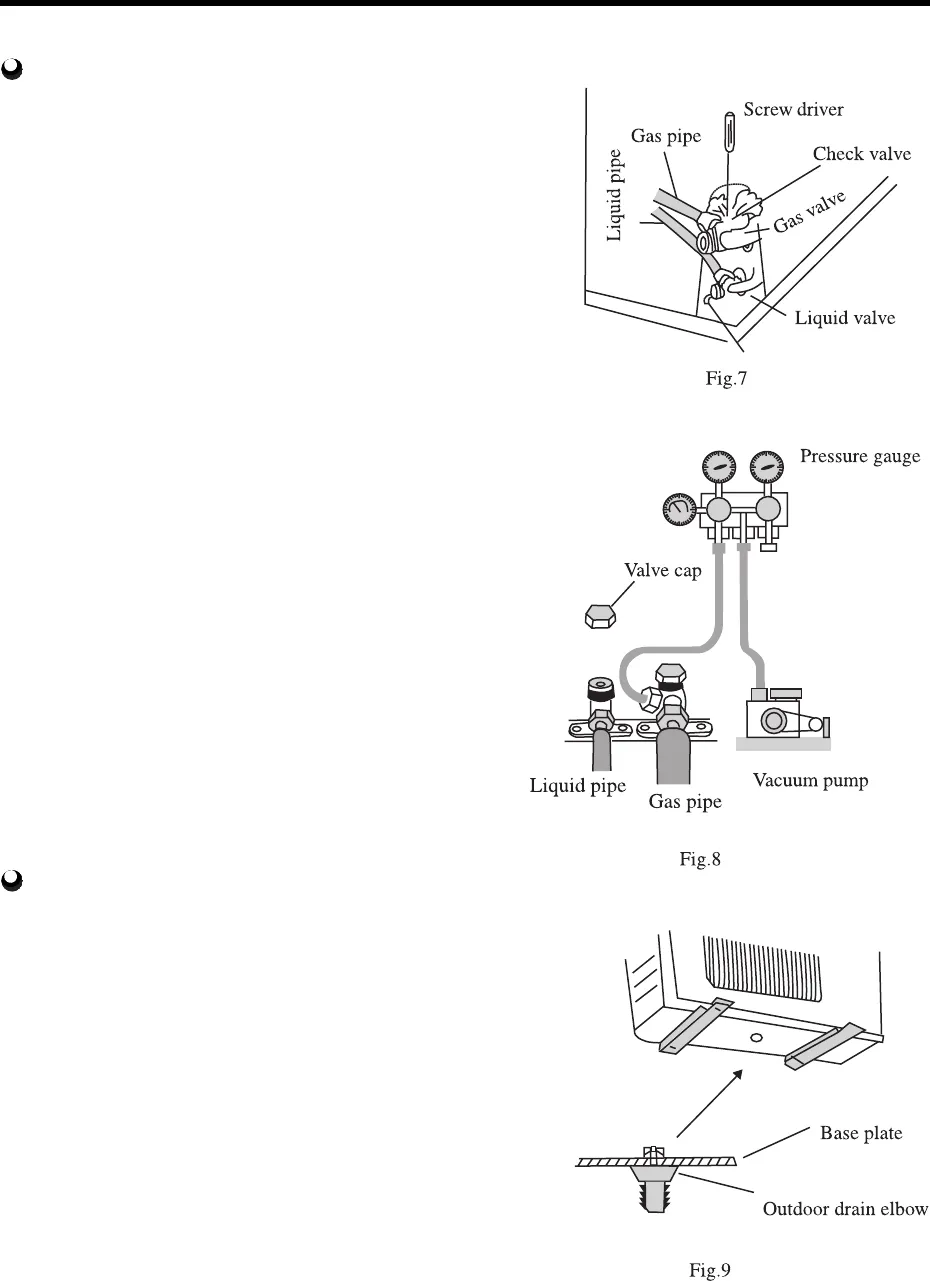
–26–
¡ª
1.Remove the flare nuts from the cut-off valves of the
outdoor unit.
2.Align the center of the piping flare with the relevant
valve, and screw in the flare nut about 3 – 4 turns by
hand.
3.Tighten the flare nut with spanner and torque wrench.
4.Remove the valve caps of the gas valve and liquid valve
and the service port nut.
5.Loosen the valve stem of the liquid valve with a hex
wrench.
6.Push the check valve core of the gas valve to discharge
air and moisture remaining in the refrigerant system.
7.Stop pushing the valve core as soon as the refrigerant
starts to be discharged, and reinstall the service port
nut.
8.Open the liquid valve and gas valve entirely (shown in
Fig.7).
9.Tighten the valve caps and test leakage at all joints of
the piping (both indoor and outdoor ) with liquid soap
or leak detector.
10.If possible, discharge air and moisture remaining in
the refrigerant system with a vacuum pump. (shown in
Fig.8)
Air purging and leakage test
Outdoor condensation drainage
( Heat pump type only)
When the unit is heating or defrosting, the waste water formed
in the outdoor unit can be drained out reliably through the drain
hose.
Installation:
Install the outdoor drain elbow in the Ø25 hole on the base
plate as shown in Fig.9, and joint the drain hose to the elbow,
so that the waste water formed in the outdoor unit can be drained
out to a proper place.










